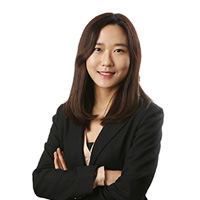Wealthy young Koreans hold average asset of W6.6b: report
By Jung Min-kyungPublished : April 13, 2022 - 15:13

Wealthy Koreans in their 20s, 30s and 40s held an average asset of 6.6 billion won ($5.3 million) with a median annual income of 400 million won as of end-2021, a report showed Wednesday.
The report dubbed 2022 Korean Wealth Report compiled by a think tank under Hana Bank was based on a survey of 1,952 Koreans above the age of 19 conducted in December last year. It categorized 708 respondents with personal assets over 1 billion won as “wealthy,” and of the group, 131 people aged between 19 and 49 as “young” and 577 people aged above 50 as “old.”
Real estate accounted for an average 60 percent of the young rich’s 6.6 billion won in assets, while the rest was made up of financial assets including stocks, according to Hana Institute of Finance. Of the financial assets, stocks accounted for average 25 percent. Some 65 percent of the young rich held foreign assets including overseas stocks and real estate.
Some 21 percent of the young rich invested in virtual assets such as cryptocurrency, but the average size of investment stood at some 100 million won. Some 47 percent of them said they plan to invest in new types of virtual assets such as non-fungible tokens, but most intend to keep the investment at the current level due to volatilities.
Overall, the young rich each have 1.7 houses and 37 percent lived in the affluent Gangnam area. They preferred to invest in commercial real estate compared to living spaces and 34 percent chose real estate as their future choice of investment among other assets.
Among income sources for the young rich, 45 percent responded annual salary, while 23 percent said income from businesses. Some 18 percent said inheritance from family members and 15 percent pointed to property income.
A gap existed between the average assets held by the young rich who had received inheritance and those who did not. Those who had assets backed by inheritance held an average 12.8 billion won with real estate accounting for 70 percent, while those who did not had an average 3.9 billion won.
Some 31 percent of the young wealthy were employed by a company, while 21 percent of them were classified as high-paid professionals such as doctors and lawyers.
“We were able find out through Hana Bank’s private bankers that the young rich became rich through ‘ideas,’ while the old rich made money through labor,” Hwang Sun-kyung, senior researcher at Hana Institute of Finance said.
“From now on, the market and investment will revolve around the interest of the young rich,” she added.
The report dubbed 2022 Korean Wealth Report compiled by a think tank under Hana Bank was based on a survey of 1,952 Koreans above the age of 19 conducted in December last year. It categorized 708 respondents with personal assets over 1 billion won as “wealthy,” and of the group, 131 people aged between 19 and 49 as “young” and 577 people aged above 50 as “old.”
Real estate accounted for an average 60 percent of the young rich’s 6.6 billion won in assets, while the rest was made up of financial assets including stocks, according to Hana Institute of Finance. Of the financial assets, stocks accounted for average 25 percent. Some 65 percent of the young rich held foreign assets including overseas stocks and real estate.
Some 21 percent of the young rich invested in virtual assets such as cryptocurrency, but the average size of investment stood at some 100 million won. Some 47 percent of them said they plan to invest in new types of virtual assets such as non-fungible tokens, but most intend to keep the investment at the current level due to volatilities.
Overall, the young rich each have 1.7 houses and 37 percent lived in the affluent Gangnam area. They preferred to invest in commercial real estate compared to living spaces and 34 percent chose real estate as their future choice of investment among other assets.
Among income sources for the young rich, 45 percent responded annual salary, while 23 percent said income from businesses. Some 18 percent said inheritance from family members and 15 percent pointed to property income.
A gap existed between the average assets held by the young rich who had received inheritance and those who did not. Those who had assets backed by inheritance held an average 12.8 billion won with real estate accounting for 70 percent, while those who did not had an average 3.9 billion won.
Some 31 percent of the young wealthy were employed by a company, while 21 percent of them were classified as high-paid professionals such as doctors and lawyers.
“We were able find out through Hana Bank’s private bankers that the young rich became rich through ‘ideas,’ while the old rich made money through labor,” Hwang Sun-kyung, senior researcher at Hana Institute of Finance said.
“From now on, the market and investment will revolve around the interest of the young rich,” she added.








![[Today’s K-pop] Blackpink’s Jennie, Lisa invited to Coachella as solo acts](http://res.heraldm.com/phpwas/restmb_idxmake.php?idx=644&simg=/content/image/2024/11/21/20241121050099_0.jpg&u=20241121172748)









![[Today’s K-pop] Babymonster logs 100m views with ‘Drip’ music video](http://res.heraldm.com/phpwas/restmb_idxmake.php?idx=642&simg=/content/image/2024/11/22/20241122050051_0.jpg&u=20241122172213)